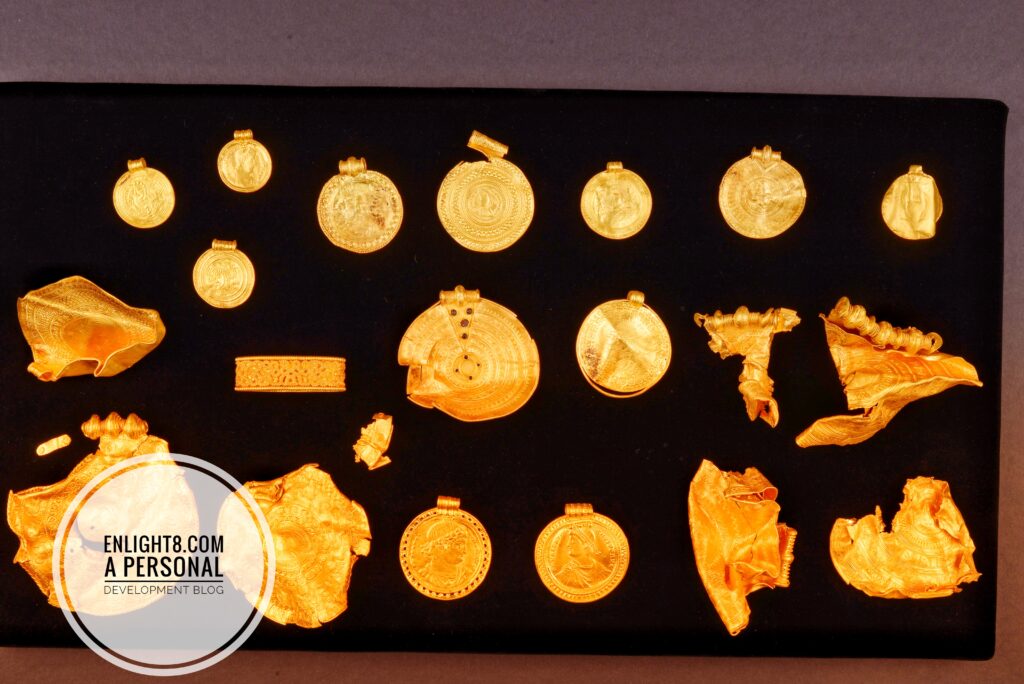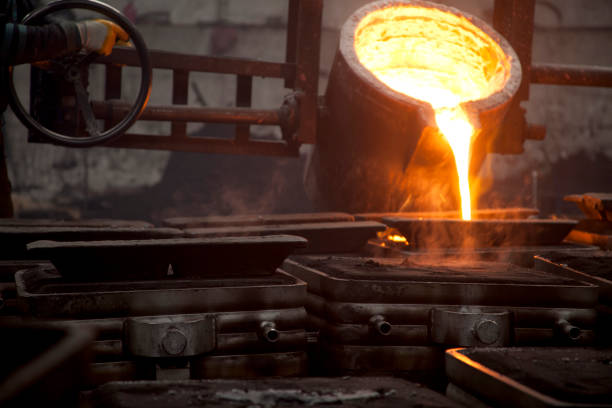
8 Reasons to Invest in Gold and Silver as Safe Haven Assets
Investing can feel overwhelming during times of market volatility. Many seek ways to protect their asset investments and ensure security during these unpredictable periods. One option worth considering, which, historically, human civilization has continued to utilize for thousands of years, is investing in tangible assets like gold and silver.
These precious metals have stood the test of time and have proven reliable and safe haven investments. This post will discuss eight compelling reasons why incorporating gold and silver into your investment portfolio could be a wise decision.
1. Timeless Intrinsic Value

Gold and silver have been vital forms of money and stores of value for thousands of years. Unlike fiat currency, which depends on government trust, these metals have intrinsic value as tangible assets. Unlike fiat money, gold and silver don’t lose value over long periods. They are recognized and accepted globally, and gold and silver coins have long existed throughout human history and many civilizations, making them the most valid form of money.
Gold and silver are often considered safe havens, especially during economic turmoil, uncertainty, and currency inflation. When the value of fiat paper money drops, precious metals tend to hold their value, attracting investors seeking security for their wealth. Gold and silver are more than just attractive metals; they are timeless forms of money that offer stability and security in today’s investment landscape.
2. Fight Inflation
Precious metals like gold and silver often hold their value or even increase when inflation rises. This process happens because, as inflation increases, paper money’s value usually decreases. Gold and silver have a history of maintaining their worth over time, making them a wise choice to protect your wealth from inflation.
As of 2025, the U.S. national debt has ballooned to $36 trillion, which means that each person in the United States effectively owes over $100,000 to cover this debt. With ongoing things like stimulus checks, bank bailouts, and constant money printing by the Federal Reserve, the value of paper currency keeps dropping. This dilution of fiat currency means that if you’re holding onto cash, you’ll likely see your purchasing power shrink daily compared to investing in gold and silver.
3. Protection from Crisis

Many investors turn to gold and silver when geopolitical tensions, wars, or market crashes occur because these metals are considered safe investments. There are many uncertainties, especially with the growing trade conflicts between the United States and China. These conflicts lead to high tariffs that could negatively impact the global economy.
In tough times, gold and silver have been reliable assets that help protect and stabilize investment portfolios. Owning real gold and silver or investing in similar options can be a savvy strategy to prepare for economic challenges ahead.
4. Gold and Silver Are Overlooked Investments
Most investors overlook the value of investing in gold and silver. For example, Apple has an annual market value of nearly $1 trillion. If Apple wanted to buy all the gold and silver produced globally, it would only need about $200 billion, just 20% of its total market capitalization. Currently, many investors don’t own any gold or silver, which means that if more people start buying, the limited supply will likely drive prices up. This scarcity could make gold and silver an attractive option for investors looking to diversify.
Investing in gold and silver is also a smart way to protect against inflation. Many people put their money in stocks or real estate to safeguard their purchasing power, but these markets can be unpredictable. Unfortunately, most people know the potential benefits of owning gold and silver. Many choose to invest through stock ETFs instead of acquiring physical gold and silver, which makes them more vulnerable to market manipulation. By owning actual gold and silver, investors can have more control over their assets.
Historically, gold and silver have performed well compared to fiat currencies—paper money not backed by physical assets like gold or silver. Gold and silver preserve purchasing power during times of increasing inflation. Because of this, financial advisors often recommend that individuals include at least 5-10% of their investment portfolios in gold and silver. A standard guideline is to own about 5-10 ounces of gold and 200 to 1,000 ounces of silver to hedge against economic uncertainty effectively.
5. Gold and Silver Are Rare Elements

Gold and silver are not just valuable; they are also rare elements both on Earth and in the universe. Gold, represented by the symbol “Au” on the periodic table, cannot be reproduced or created in a laboratory. This element makes it different from diamonds. Diamonds are not rare and can be created artificially in a laboratory. On Earth, the concentration of gold is incredibly low, sitting at just 0.004 parts per million (ppm) in the Earth’s crust. Silver, symbolized by “Ag,” is also rare, with an estimated concentration of 0.075 ppm.
Silver is also considered an industrial metal. We consume silver through electronics, solar panels, electric vehicles, and medical devices. The demand for silver will likely continue to increase in the future.
6. Timeless Form of Money
Gold and silver are not just currencies; they are real money. For over 5,000 years, people have used these precious metals for trade. Their value comes from their rarity and the effort to extract, refine, and shape them into jewelry, coins, or bars.
No matter where you are in the world, gold and silver are considered valuable and are accepted as a form of payment. Gold, for example, can easily be converted to many different currencies worldwide and is a valuable asset. Currencies like the dollar used to be backed by gold; however, once it lost this connection, it was considered a fiat currency because it has no backing but complete faith in a country’s wealth (or lack thereof). History has shown that fiat currencies eventually become worthless as civilization inflates their value away.
In contrast, gold and silver have maintained their value throughout history. Throughout the millennia, societies used gold and silver as money to preserve wealth and trade.
7. Portfolio Diversification

Diversification is a key strategy for managing investment risk. By including different types of assets in a portfolio, such as gold and silver, alongside stocks and bonds, investors can help protect themselves against market downturns. Precious metals like gold and silver often behave differently from traditional assets. When the stock markets are volatile or experiencing losses, these metals can retain their value or even increase in price, offering a “safe haven” for investors worried about the overall economic climate.
Many analysts believe stocks are overpriced, as suggested by the widely recognized Warren Buffett Indicator. This indicator measures the total market capitalization of U.S. stocks and compares it to the country’s GDP (Gross Domestic Product). As it stands now, this ratio exceeds 205%, signaling that stocks are overvalued compared to the productivity of the U.S. economy. Traditionally, a reading above 100% indicates that stocks are not priced in alignment with economic growth, suggesting it may not be the best time to invest heavily in the stock market, especially for those looking for long-term stability.
As the Federal Reserve continues implementing monetary policies that involve printing more money and purchasing U.S. stocks, many investors increasingly turn to gold and silver to protect their purchasing power. This trend will likely intensify as the Fed seeks to support the economy through more monetary stimulus. In uncertain times like these, diversifying into precious metals can help safeguard investments against inflation and fluctuating markets, making them an essential part of a well-rounded investment strategy.
8. Global Demand for Gold and Silver

Gold and silver stand out in the investment world because they are tangible assets that you can hold in your hand, unlike stocks or bonds that exist only in a digital format. This physical presence often provides security for investors who may be uneasy about the increasing reliance on digital currency and virtual transactions. Gold and silver are also finite resources; they cannot be printed or manufactured at will like paper money. This limitation helps protect them from devaluation, making them a more stable choice in uncertain economic times.
In recent years, numerous central banks around the globe have recognized the value of gold and silver, leading them to increase their holdings of these precious metals. These banks aim to safeguard their countries’ wealth against inflation and currency fluctuations by accumulating gold and silver reserves. This trend highlights a growing confidence in gold and silver as reliable assets that can help maintain financial stability. As more individuals and institutions become aware of these benefits, the demand for gold and silver will rise, further reinforcing their importance in the global financial landscape.




